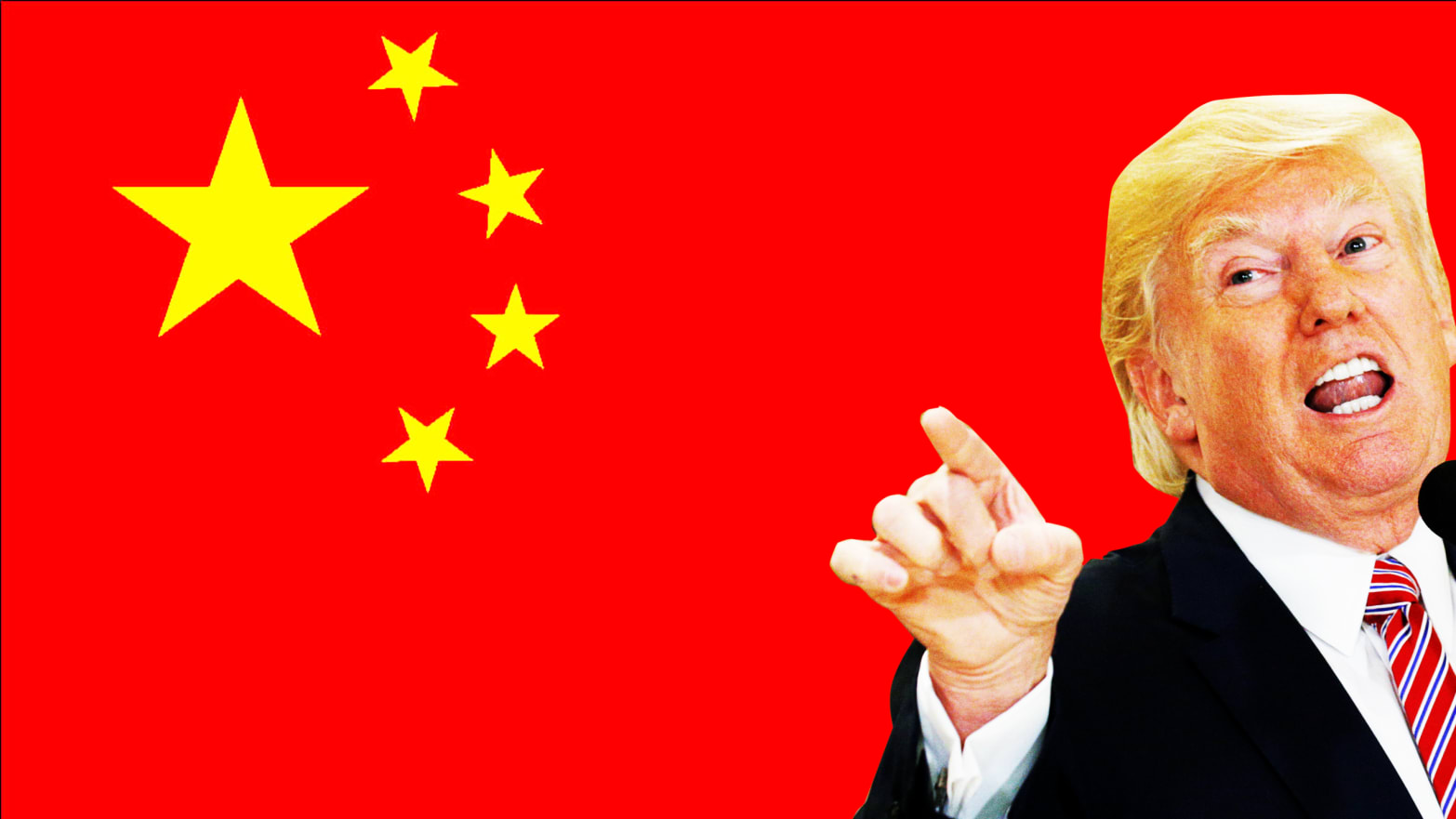“Let me assure those people who intend to fight a trade war,” Cui Tiankai, China’s ambassador to the U.S., told China Daily, Beijing’s official English-language newspaper. “We will certainly fight back. We will retaliate. If people want to play tough, we will play tough with them and see who will last longer.”
Most assume, as trade frictions intensify, that China will outlast the U.S.—yet it is America, because it runs persistent trade deficits and for other reasons, that will likely eventually prevail.
Effective Friday, President Donald Trump imposed tariffs on steel and aluminum from various countries, including China, pursuant to Section 232 of the Trade Expansion Act of 1962.
More significantly, on Thursday he signed a memorandum that will soon lead, pursuant to Section 301 of the Trade Act of 1974, to the levying of tariffs on perhaps $60 billion of Chinese goods. At the same time, he directed the Treasury Department to consider the imposition of curbs on Chinese investment.
Much—most—of the reaction from around the world has been negative. Observers, trade groups, and others have worried that Trump is starting a trade war. Markets panicked. The Dow Jones Industrial Average plunged 1,149 points Thursday and Friday, a 4.66 percent drop off Wednesday’s close. Asian bourses also fell hard on trade war fears.
It certainly looks like a trade war is brewing. China’s Ministry of Commerce on Friday announced tariffs of 15 percent and 25 percent on almost $3 billion of American products in 128 categories, retaliation for Trump’s Section 232 tariffs.
At the same time, Chinese officials have been making threats, especially promising to not buy American agricultural products or to reduce purchases of U.S. Treasury debt.
Experts, believing China holds more leverage, ignore important realities. First, that country is growing more dependent on access to the American market. In 2016, a stunning 68.0 percent of China’s overall merchandise trade surplus related to sales to the U.S. In 2017, that figure increased to 88.8 percent. Trade-surplus countries, as history shows, generally suffer more in trade wars.
Beijing, therefore, is generally vulnerable to being pushed around by Washington. “If trade is so unimportant to China, why has China’s trade predation lasted so long and taken so many different forms?” Alan Tonelson, an independent Washington, D.C.-based trade analyst, asked, in comments to The Daily Beast over the weekend.
Second, the American economy is far bigger than the Chinese one. Beijing claimed gross domestic product of $12.84 trillion in 2017. America’s economy, by way of contrast, clocked in at $19.39 trillion last year.
China’s GDP numbers are surely overstated because, especially during the last two years, the country’s growth was less than half that reported by the official National Bureau of Statistics. America’s larger economy is, at the moment, in fact growing at a faster clip than China’s.
It should go without saying that big economies push smaller ones around, especially when the gap is this large.
Third, the American economy, for all its faults, is stable, and China’s, by most accounts, is on the verge of a debt crisis. China’s debt-to-GDP ratio looks like it is somewhere, depending on the amount of so-called hidden debt, between 350 percent and 400 percent.
Chinese concern about the state of the economy led to extraordinary capital flight in 2015 and 2016, with net capital outflow probably reaching $2.1 trillion in the two-year period. Only the imposition of draconian capital-control measures beginning in the fall of 2016 stopped the outbound torrent of capital.
In this regard, Beijing has been, on balance, selling American Treasury obligations since the middle of 2014 in order to defend its currency, the renminbi, and this has not caused any noticeable effect on the ability of the U.S. to finance deficits. China’s Cui can threaten selling greenbacks in response to Trump’s tariffs as he did last week, but his government either has to dump dollars or clamp down even harder on money flows. Clamping down can only work in the short term, so dollar sales will eventually occur, whatever Trump does or does not do on trade.
In addition to ignoring the fundamental balance of power between China and the U.S., experts in recent days have been making specific arguments that are particularly unconvincing. First, let’s look at points put forth by Columbia University’s Joseph Stiglitz. The economist, according to China Daily, “said that the U.S. government is very constrained in what it can do as it has become very dependent on low-cost imports.”
“For instance, if the tariffs imposed on Chinese textiles and apparel increase, the cost of living in the U.S. will go up, the Federal Reserve by its mindset will increase interest rates, which will slow the economy and create unemployment,” Stiglitz said Saturday at the China Development Forum in Beijing.
We hear a variation of this argument when American retailers, politicians, and others contend that Trump’s tariffs will punish Americans, who have become accustomed to buying cheap goods.
Yet China, as its promoters have told us for a half-decade, is no longer the lowest-cost producer of many items. Take Stiglitz’s example of apparel. At the beginning of this century, about 90 percent of apparel sold at Walmarts was made in China. By the end of 2012, that balance between China and the rest of the world essentially reversed. Then, my wife, surveying our local Walmart, found that every item of the store’s house brand, George, was made in Bangladesh. Simply Basic sleepwear came from Cambodia. Items with the Hanes label were stitched together in Guatemala and El Salvador. Wrangler jeans were imported from Nicaragua, and Fruit of the Loom clothes came in from Honduras. Danskin garments? They were made in the Middle East and Africa: Jordan, Egypt, and Kenya.
Trump's tariffs on apparel or other items, even if they make Chinese goods more expensive or unavailable, will not result in significant cost increases beyond a month or two. Americans will soon be buying their low-cost items from other producers, which are already, if I may use the phrase, beating the pants off China.
Second, Stiglitz has also been making the authoritarian-societies-are-good-at-weathering-storms argument. “China is better positioned and has wider range of instruments than the United States to absorb economic disturbance if the trade tension between the two countries intensifies,” he said, as summarized by China Daily. “China has more ability to direct some parts of the economy as the country has increasingly shifted toward domestically-driven demand and it can use government projects to increase demand in areas that might be suffering.”
It’s true that Trump, presiding over a free-market economy, cannot do what Stiglitz says Beijing can accomplish. Yet the Nobel-prize-winning economist misunderstands what has been happening in China.
Even if Beijing’s statistics regarding consumption’s contribution to economic output are correct—extremely unlikely—consumption is ultimately not the driver of growth in China. The ultimate driver remains investment. Consumption in China falls whenever Beijing reduces the flow of state-directed investment. And because of debt concerns, Chinese technocrats are losing the ability to create growth by investing.
For decades, Chinese leaders have staked their legitimacy primarily on the continual delivery of prosperity. Trump not only threatens the Chinese economy but also the Communist Party’s political system. That gives China’s leaders great incentive to hold back retaliatory moves.
Third, analysts love to point out that China can retaliate by not buying U.S. products. “American firms may not profit from a trade war with China, but both Airbus and Brazilian farmers have to be salivating at the prospect,” writes Colin Grabow of the Cato Institute in “Americans Will Pay the Price for Trump’s Toughened Approach with China,” posted Friday on the website of The National Interest.
Boeing executives and American soybean producers are right to be nervous, but they surely know how global markets work. If China does not buy soybeans from the American heartland and purchases them from Brazil instead, American producers will sell soy to Brazil’s customers.
There are only so many soybeans in the world at the moment, and the same principle generally holds for commercial aircraft. Airlines and leasing companies are unlikely to wait years longer because Airbus’ production has been diverted to China to fill orders that would have gone to Boeing. In most cases, Airbus customers will opt for Boeing craft to fill needs.
In short, Trump holds the high cards when it comes to China, and, unlike his predecessors, he knows it.
So, yes, Ambassador Cui, we will see who lasts longer if you choose to go toe-to-toe with president No. 45.

